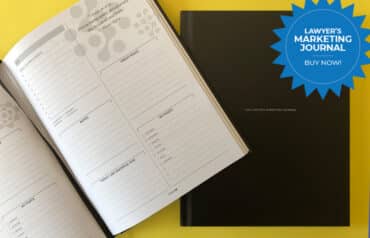Persuasive writing is a big part of your job. Skilled legal writers grab and hold their reader’s attention without ever causing confusion. At the end, the reader should be rooting for the proponent. Yet, many lawyers have lost sight of how to make this happen.
Stick to Geometry
A basic tenet of journalism is to use the inverted pyramid method to organize information. The top of the triangle is the widest part. The most important information, a generalized summary of what is to follow, goes here. Everything else supports the summary. If the reader stopped after the first few sentences, that would be enough to convey the message. Working through the piece uncovers progressively granular, less determinative information
Journalists call this opening section the “lede.” It has traditionally been spelled that way to distinguish it from references to the metal pieces used for old-fashioned typesetting called “lead,” for the metal from which the pieces were created. The lede should cover the Who, What, When, Where, Why and How of the case.
You want to frame your opening in a way that supports your position. For example, in family court, these few words might suffice: “Litigant moves the court to compel TheOtherOne to comply with §rrr.” A judge would immediately grasp who wants what from whom and why.
A response to a demand could start: “This is in response to your letter of December 25, 20xx, which erroneously asserts that tax is due on $aa,aaa which had not been reported when in fact that exact amount appears on Schedule x, line #.”
The details needed to flesh out the argument come next. It is perfectly appropriate and helpful to use subheadings like Facts or Applicable Law or to number your arguments. Again, the most important details should come first. A litany of less relevant information may prompt your reader to stop reading or just skim, missing the best arguments that you saved for the end.
The Internet Made Me Do It
Website and social media post formats have accustomed users to wading through multiple paragraphs before getting to the desired information. Website designers know how important it is to grab websurfers’ attention before they leave the site. Website analytics report how long the user engaged. For the owner, the longer the user stays on the site inescapably seeing advertisements, the better.
Are you frustrated when a social media post teases you into clicking through to a site, only to force you to review pages of drivel and pop-ups before you get to the promised answer?1 Now imagine how frustrated your reader is when they have to wade through pages before there is enough data to understand your position.
But What About IRAC?
Law school probably taught you to create memoranda using the Issue, Rule, Application/Analysis, Conclusion paradigm. That worked great for the bar exam. BigLaw partners expect associates to feed them the results of their research the same way. But that may not be the most persuasive approach.
Many law schools now teach the CRAC alternative: Conclusion, Rule, Analysis, Conclusion. It’s the conclusion, where you want the reader to end up, that’s important.
The Top of the Triangle
You should be able to encapsulate the merit of your case in no more than three sentences. Open your writing with that nutshell summary.
1 Let me save you some time. The answer is every vegetable.
Illustration ©iStockPhoto.com
Subscribe to Attorney at Work
Get really good ideas every day for your law practice: Subscribe to the Daily Dispatch (it’s free).
A New Marketing Journal Designed for Lawyers
Every element of this beautiful guided journal has been designed to both motivate you and keep your marketing efforts on track. From Theda C. Snyder and Attorney at Work, the Lawyer’s Marketing Journal is the perfect place to capture all your great ideas, write down your daily tasks, notes and accomplishments — and monitor your progress. Take control of your marketing and order your journal today.

















